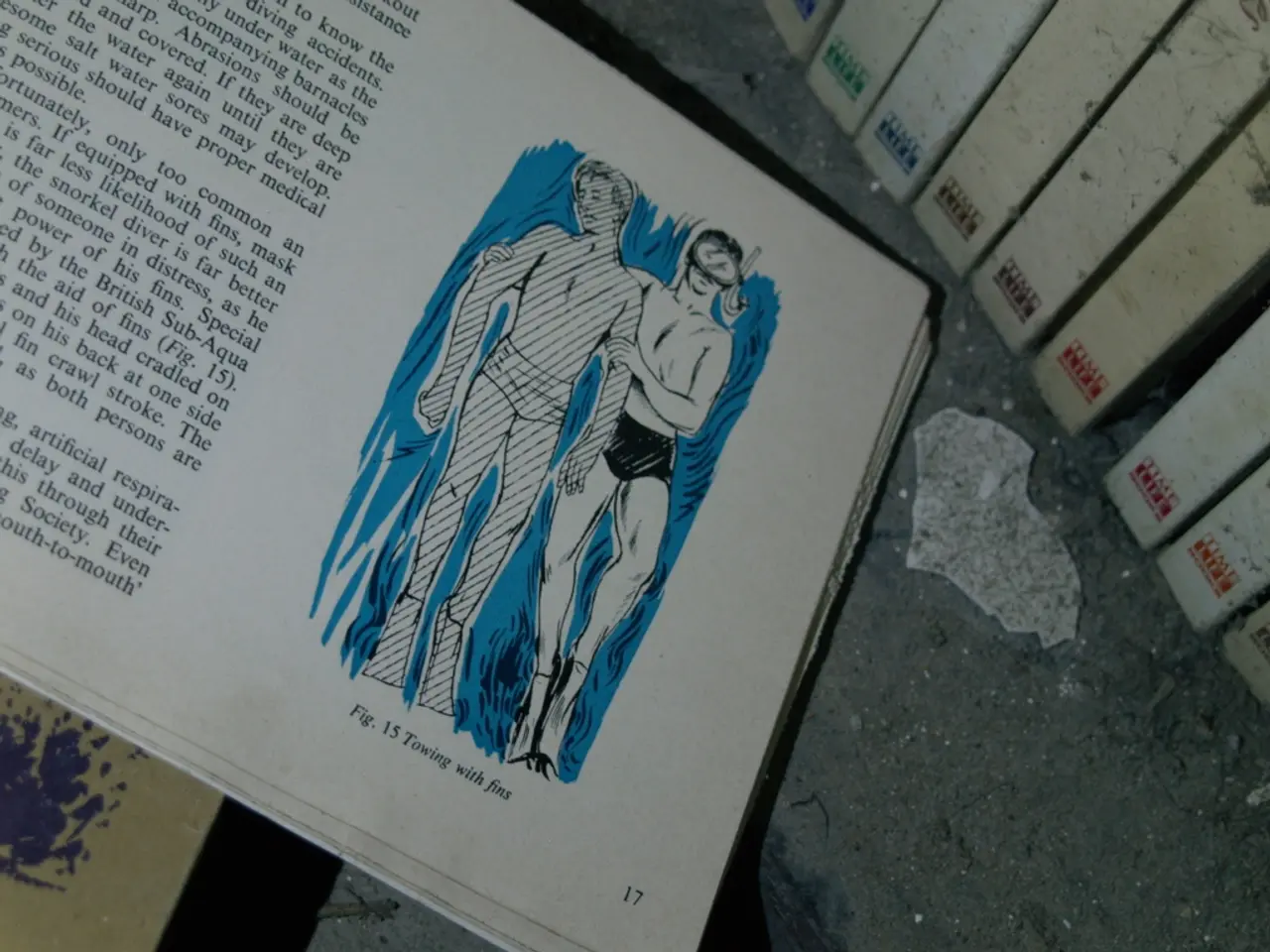Analysis of the Photograph's Origin: Mirrored Depths in a Subterranean Grotto
In the heart of the Yucatan Peninsula, lies a unique underwater paradise that is capturing the attention of divers and photographers alike - Cenote Dos Ojos. Translated as "Two Eyes" in Spanish, this mesmerising sinkhole offers a rare blend of natural beauty, intricate cave formations, and crystal-clear waters.
Dos Ojos is part of the vast Sistema Dos Ojos, one of the longest underwater cave systems globally, which was recently merged with the Sac Actun system, significantly increasing its size. The cenote is renowned for its exceptional water clarity, with visibility often reaching up to 100 meters (328 feet), making it perfect for exploring the underwater landscape and rock formations.
The cenote consists of two large neighbouring sinkholes, often called the West Eye and East Eye, or Ojo Azul (Blue Eye) and Ojo Negro (Black Eye). These two connected sinkholes offer diverse diving and snorkelling conditions, catering to both beginners and advanced divers. The first sinkhole is filled with natural light and shallow areas, ideal for snorkelers, while the second sinkhole is darker, deeper, and more dramatic, providing a more immersive cave experience for certified divers.
One of the most captivating features within Dos Ojos is the Bat Cave, accessible only with certified guides. This cave involves swimming through narrow passages and leads to a large dome where bats rest, adding an intriguing natural aspect to the dive.
Jannik Pedersen, a Danish photographer, recently captured the magic of Dos Ojos in his winning photo in the 'Compact wide-angle' category of the 2011 Ocean Art competition. Pedersen, who started diving in 2000, had no experience in cenote or cave diving before his visit. However, the unique and mysterious sceneries provided him with an abundance of opportunities for underwater photography, which sparked a strong passion within him.
Pedersen used a Canon PowerShot S95 camera, Canon's own housing, INON wide-angle lens, and dual INON D2000 strobes for the photo shoot. He employed a slower shutter-speed (1/8 sec.) and increased the flash output to illuminate the cave sceneries. During the photo shoot, he had a private dive-guide, which provided him with the freedom to capture photos of the cenote.
One of Pedersen's most memorable shots features a diver in the shot, creating a unique mood. The reflection appearing in the roof of the cave system was a large air pocket, which created a magical mirror-like scenery. Pedersen's love for capturing such moments is evident in his work, as he often enjoys taking photos with a diver in the shot.
Dos Ojos is considered an easy and enjoyable dive spot for certified divers, with two different dive lines and swim-through tunnels allowing exploration of various rock formations and lighting effects. Proper buoyancy control is needed due to intricate passages. Access to certain deeper and darker sections, like Ojo Negro and Bat Cave, requires a guide for safety reasons.
The cenote is located about 20 minutes north of Tulum Town and is visitor-friendly, with snorkeling tours that provide high-quality equipment and family-friendly gear. It is a must-visit for both snorkelers and certified divers looking for a unique underwater adventure in Mexico.
[1] Cenote Dos Ojos: A Diver's Paradise in Mexico. (n.d.). Retrieved from https://www.tourist-destinations.com/mexico/cenote-dos-ojos-a-divers-paradise-in-mexico/
[2] Exploring the Underwater World of Cenote Dos Ojos. (n.d.). Retrieved from https://www.diveadvisor.net/cenote-dos-ojos/
[3] Dos Ojos Cenote: A Guide for Divers and Snorkelers. (n.d.). Retrieved from https://www.cenotetours.com/dos-ojos-cenote-a-guide-for-divers-and-snorkelers/
[4] Dos Ojos Cenote: A Hidden Gem for Cave Diving. (n.d.). Retrieved from https://www.cenotetours.com/dos-ojos-cenote-a-hidden-gem-for-cave-diving/
[5] Cenote Dos Ojos: A Diver's Dream Come True. (n.d.). Retrieved from https://www.cenotetours.com/cenote-dos-ojos-a-divers-dream-come-true/
[6] Pedersen, J. (n.d.). Retrieved from https://www.jannikpedersen.com/
[7] Winning Photos of the 2011 Ocean Art Competition. (n.d.). Retrieved from https://www.oceanartunderwater.com/competition/2011-winners/
- Cenote Dos Ojos, known as the Two Eyes in Spanish, is a captivating underwater paradise located in the Yucatan Peninsula.
- This unique sinkhole, part of the Sistema Dos Ojos, offers exceptional water clarity, reaching up to 100 meters, providing a perfect setting for exploring the underwater landscape.
- The cenote consists of two large sinkholes - the West Eye and East Eye, or Ojo Azul (Blue Eye) and Ojo Negro (Black Eye), catering to both beginners and advanced divers.
- The Bat Cave, a mesmerizing part of Dos Ojos, is accessible only with certified guides, offering a more immersive cave diving experience.
- In 2011, Danish photographer Jannik Pedersen won a prestigious award for his enchanting photo of Dos Ojos in the 'Compact wide-angle' category of the Ocean Art competition.
- Pedersen, who started diving in 2000, used a Canon PowerShot S95 camera, Canon's housing, INON wide-angle lens, and dual INON D2000 strobes for the photo shoot.
- One of Pedersen's most memorable shots features a diver in the shot, creating a unique mood, with a magical mirror-like scenery formed by a large air pocket in the cave system.
- Dos Ojos is easily accessible for certified divers and snorkelers, offering a unique underwater adventure in Mexico, ideal for those seeking a blend of natural beauty, intricate cave formations, and crystal-clear waters.




